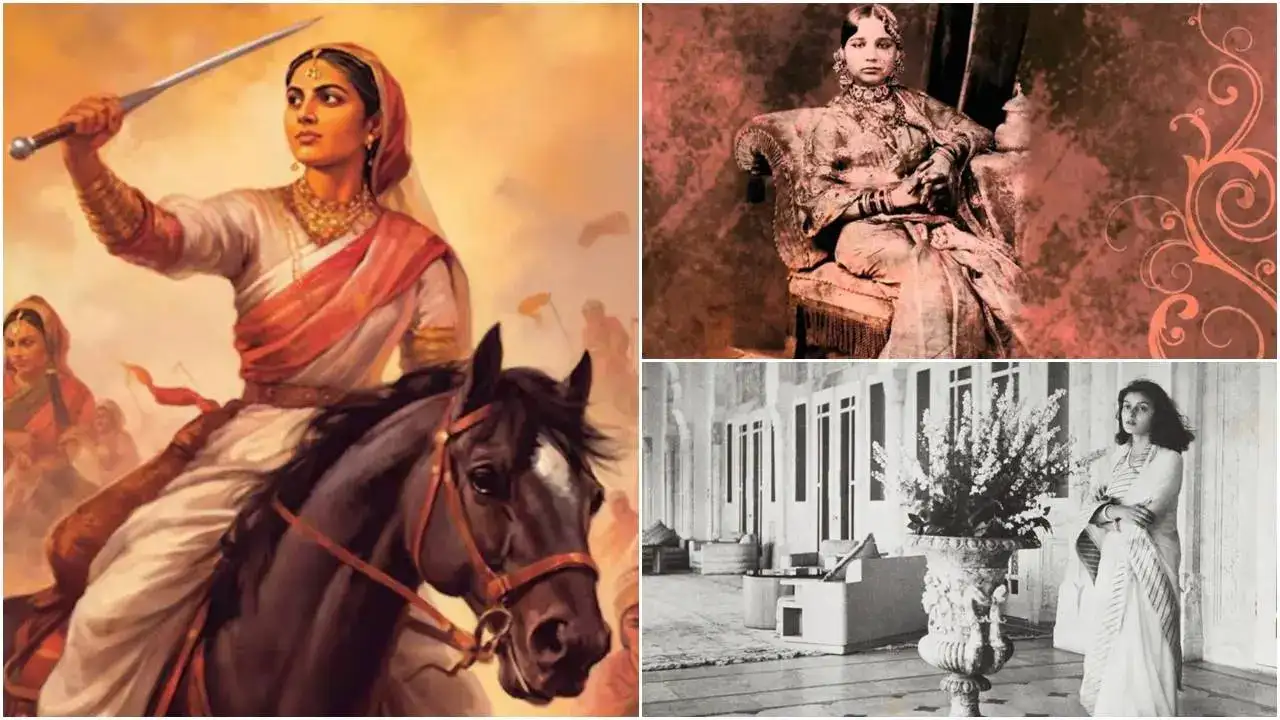Copyright timesnownews

History remembers kings by their wars, empires, and treaties. But in the palaces of India—behind purdahs, silks, and sabres—were women who were quietly rewriting what power meant. They fought with swords and strategy, diplomacy and daring, intellect and instinct. They weren’t just consorts; they were commanders, reformers, and changemakers who outwitted an empire or two—all while wrapped in brocade. ,From the fortresses of Bundelkhand to the pink corridors of Jaipur, from Tamil Nadu’s fiery fields to Bhopal’s progressive court, here’s a look at the women who ruled, rebelled, and revolutionised — often without being credited for it. ,⚔️ Maharani Lakshmibai of Jhansi — The Warrior Queen Who Refused to Bow ,, ,Before she was a legend, she was Manikarnika — a young woman who loved horses more than hairpins. But when the British annexed Jhansi under the Doctrine of Lapse, she became something else entirely: the symbol of defiance. ,Trained in sword fighting and horse riding, Lakshmibai didn’t just “participate” in the 1857 Revolt — she commanded it. She led her troops into battle with her adopted son strapped to her back, using guerrilla tactics that startled British generals who dismissed her as “a mere woman.” ,Her true revolution wasn’t just military; it was cultural. She shattered the image of docile queens, proving that royalty could be both ornamental and operational. ,Fun fact: British officers described her as “the best man among the rebels.” History, it seems, had to change its pronouns. ,👑 Begum Hazrat Mahal — The Rebel Queen of Awadh ,, ,If Lakshmibai was a warrior, Hazrat Mahal was a strategist. A courtesan-turned-queen, she ruled Awadh from behind the zenana walls with unmatched wit and courage. ,When her husband Nawab Wajid Ali Shah was exiled to Calcutta, the Begum didn’t weep — she rose. She proclaimed her son the ruler and rallied the citizens of Lucknow to revolt against the British. Her fiery speeches and tactical brilliance made her one of the earliest examples of female wartime leadership in India. ,Her palace became both a fortress and a feminist front. And though she died in exile in Nepal, her rebellion echoed across Awadh long after she was gone. ,Hidden revolution: She turned the zenana into a war room — and the women within into strategists. ,💎 Maharani Gayatri Devi — The Modernist of Jaipur ,, ,Decades later, another queen took the revolution indoors — and into Parliament. Jaipur’s Maharani Gayatri Devi was every inch a royal icon — Vogue called her “one of the most beautiful women in the world.” But behind the chiffon and pearls was a woman determined to rebuild a modern India. ,She founded the Maharani Gayatri Devi Girls’ Public School in 1943 — a bold move in a time when female education wasn’t even discussed in polite society. Later, she entered politics, winning her first election in 1962 with an astonishing 96% of the vote — still a record. ,Her power was not in her crown but her conviction — that education and elegance could coexist, and that queens could be reformers without losing their regality. ,Fun fact: She once drove her own car — through Jaipur’s crowded streets, without guards — scandalising traditionalists and delighting young women. ,🕊️ Maharani Chimnabai II of Baroda — The Early Feminist Monarch ,, ,Before the word “feminism” became fashionable, Baroda’s Maharani Chimnabai II lived it. The queen consort of Maharaja Sayajirao Gaekwad III, she transformed the Baroda court into a laboratory of progress. ,She advocated for widow remarriage, promoted women’s education, and championed healthcare reforms — all while maintaining the decorum expected of a royal. But perhaps her most radical act was stepping out unveiled in public — an act that sent shockwaves through princely India. ,Hidden revolution: She used the veil of royal protocol to push for reform, turning palace privilege into a platform for women’s liberation. ,🌺 Rani Avantibai Lodhi — The Forgotten General of Madhya Pradesh , ,While some queens ruled courts, Avantibai Lodhi ruled a battlefield. The ruler of Ramgarh during the 1857 Uprising, she assembled an army of 4,000 soldiers to fight the British after her husband’s death. ,Armed with courage and an iron resolve, Avantibai became the beating heart of the Bundelkhand rebellion. Though she ultimately fell in battle, her legacy lived on in folk songs — sung in hushed tones by village women who saw her as one of their own. ,Fun fact: British officers were so confounded by her resistance that they initially refused to believe she wasn’t leading under the guise of a man. ,🧵 Rani Velu Nachiyar — The Tamil Tigress Who Fought Before 1857 ,, ,A century before Lakshmibai, there was Velu Nachiyar — India’s first queen to wage war against the British. Born in Sivaganga, she was fluent in multiple languages and trained in martial arts and military strategy. ,When her kingdom was seized and her husband killed by the British East India Company, she didn’t retreat — she reorganised. She built alliances, gathered intelligence, and created India’s first female army regiment, led by her loyal commander Kuyili — who famously set herself on fire to blow up British armouries. ,Hidden revolution: Velu Nachiyar proved that rebellion wasn’t born in 1857 — it was already roaring in the Tamil south. ,💃 Nawab Sultan Jahan Begum of Bhopal — The Architect Queen , ,Imagine ruling a kingdom, writing policy papers, and hosting foreign dignitaries — all from behind a veil. That was Nawab Sultan Jahan Begum of Bhopal. ,Part of India’s only female-led princely dynasty, she built hospitals, schools, roads, and the Bhopal State Railway. She also authored books on women’s welfare and health — a rarity for her time. Her reign was proof that progress didn’t need to shed tradition; it just needed a clever negotiator. ,Fun fact: Bhopal’s roads, still lined with colonial-era lampposts, were part of her grand urban modernisation plan. ,🧠 Rani Durgavati — The Scholar-Warrior of Gondwana , ,Centuries before any of these women, Rani Durgavati ruled the tribal kingdom of Gondwana with intellect and iron. A scholar of Sanskrit and a skilled archer, she led her troops in full armour when the Mughals attacked in 1564. ,Her courage became folklore — the queen who chose death over surrender. To this day, the region celebrates her as a symbol of resistance and learning. ,Hidden revolution: She laid the foundation for a legacy where intellect and bravery were not divided by gender. ,The Courtesans Who Became Queens of Influence ,,Power doesn’t always come with a crown. Some women built empires out of grace, wit, and sheer resilience. ,Begum Samru of Sardhana, once a dancer, became a ruler with her own private army — the only Catholic queen in Indian history.,Moran Sarkar of Punjab, a Sikh courtesan, became Maharaja Ranjit Singh’s wife and adviser, influencing policies from behind the throne. ,Their palaces might not have been inherited, but their power certainly was earned. ,Hidden revolution: They redefined the idea of queenship — proving that influence could be as potent as inheritance. ,The Legacy They Left Behind ,,These royal women were far more than figures in portraits or names in dusty textbooks. They were visionaries who turned rebellion into reform and tragedy into transformation. Their stories — of silk, sabres, and secrets — remind us that revolution can wear many faces: sometimes a crown, sometimes a veil, sometimes a smile that conceals a thousand strategies. ,They didn’t just lead revolutions — they were the revolution.



